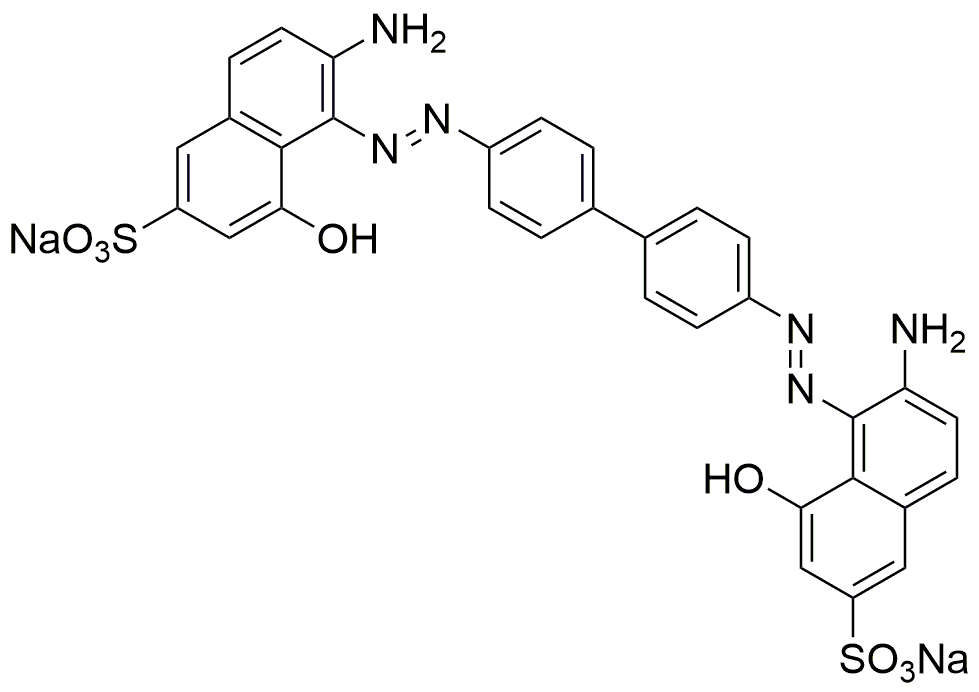Direct violet 1 is widely utilized in research focused on:
- Dyeing and Textile Industry: This chemical serves as a vibrant dye for various fabrics, providing excellent color fastness and brightness, making it ideal for textiles and fashion applications.
- Biological Staining: In microbiology and histology, it is used as a staining agent to visualize cells and tissues under a microscope, enhancing contrast and aiding in the identification of cellular structures.
- Cosmetic Formulations: Direct violet 1 is incorporated into cosmetic products for its coloring properties, allowing for the creation of visually appealing makeup and personal care items.
- Research and Development: It is employed in various laboratory experiments, particularly in studies involving dye-sensitized solar cells and photonic applications, due to its unique optical properties.
- Food Industry: This compound is sometimes used as a food colorant, providing a vibrant hue to certain products while adhering to safety regulations, enhancing the visual appeal of food items.
General Information
Properties
Safety and Regulations
Applications
Direct violet 1 is widely utilized in research focused on:
- Dyeing and Textile Industry: This chemical serves as a vibrant dye for various fabrics, providing excellent color fastness and brightness, making it ideal for textiles and fashion applications.
- Biological Staining: In microbiology and histology, it is used as a staining agent to visualize cells and tissues under a microscope, enhancing contrast and aiding in the identification of cellular structures.
- Cosmetic Formulations: Direct violet 1 is incorporated into cosmetic products for its coloring properties, allowing for the creation of visually appealing makeup and personal care items.
- Research and Development: It is employed in various laboratory experiments, particularly in studies involving dye-sensitized solar cells and photonic applications, due to its unique optical properties.
- Food Industry: This compound is sometimes used as a food colorant, providing a vibrant hue to certain products while adhering to safety regulations, enhancing the visual appeal of food items.
Documents
Safety Data Sheets (SDS)
The SDS provides comprehensive safety information on handling, storage, and disposal of the product.
Product Specification (PS)
The PS provides a comprehensive breakdown of the product’s properties, including chemical composition, physical state, purity, and storage requirements. It also details acceptable quality ranges and the product's intended applications.
Certificates of Analysis (COA)
Search for Certificates of Analysis (COA) by entering the products Lot Number. Lot and Batch Numbers can be found on a product’s label following the words ‘Lot’ or ‘Batch’.
*Catalog Number
*Lot Number
Certificates Of Origin (COO)
This COO confirms the country where the product was manufactured, and also details the materials and components used in it and whether it is derived from natural, synthetic, or other specific sources. This certificate may be required for customs, trade, and regulatory compliance.
*Catalog Number
*Lot Number
Safety Data Sheets (SDS)
The SDS provides comprehensive safety information on handling, storage, and disposal of the product.
DownloadProduct Specification (PS)
The PS provides a comprehensive breakdown of the product’s properties, including chemical composition, physical state, purity, and storage requirements. It also details acceptable quality ranges and the product's intended applications.
DownloadCertificates of Analysis (COA)
Search for Certificates of Analysis (COA) by entering the products Lot Number. Lot and Batch Numbers can be found on a product’s label following the words ‘Lot’ or ‘Batch’.
*Catalog Number
*Lot Number
Certificates Of Origin (COO)
This COO confirms the country where the product was manufactured, and also details the materials and components used in it and whether it is derived from natural, synthetic, or other specific sources. This certificate may be required for customs, trade, and regulatory compliance.


